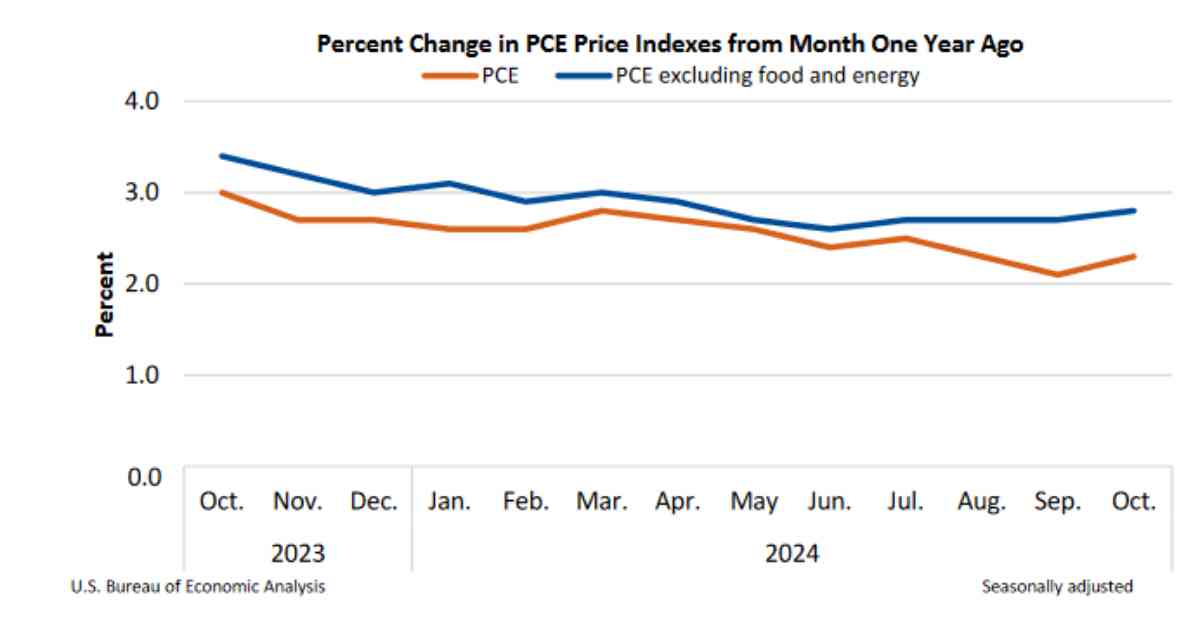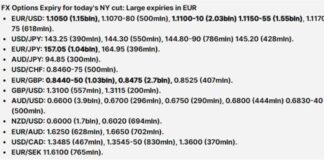In October, personal income in the United States increased by 0.6% compared to the previous month, surpassing the expected 0.3% rise. This growth amounted to a total increase of $147.4 billion. At the same time, personal spending also saw a rise of 0.4% or $72.3 billion, in line with predictions. The significant growth in income compared to spending indicates an improved ability for households to save or spend in the future, which can contribute to the overall strength of the economy.
In terms of inflation, the PCE price indices showed moderate upticks. The headline PCE price index went up by 0.2% month-over-month, while the core PCE price index, excluding food and energy, increased by 0.3% month-over-month, meeting expectations. On a year-over-year basis, the headline PCE rose from 2.1% to 2.3%, and the core PCE rose from 2.7% to 2.8%, aligning with forecasts.
Looking at specific categories, goods prices experienced a decline of -1.0% year-over-year, while services prices showed a notable increase of 3.9% year-over-year, indicating inflationary pressures are primarily concentrated in the services sector. Food prices saw a slight uptick of 1.0% year-over-year, while energy prices dropped by -5.9% year-over-year, providing some relief in terms of cost for consumers.
Overall, the data reflects a positive trend in personal income and spending, with inflation remaining relatively stable. The increase in income suggests that households are in a better position to save or spend in the future, which can help support economic growth. Additionally, the breakdown of inflation by category highlights where price pressures are most prominent, offering valuable insights into the current economic landscape.

















